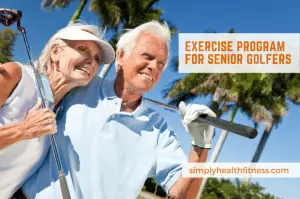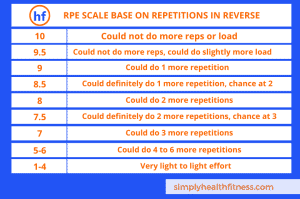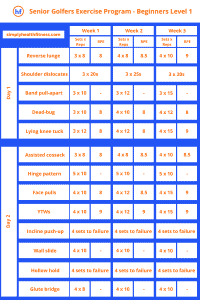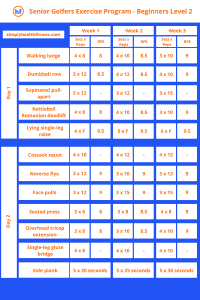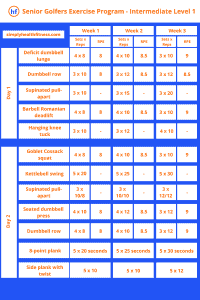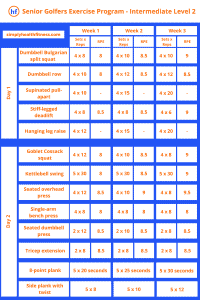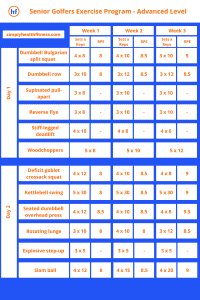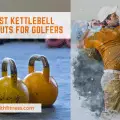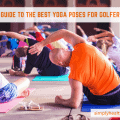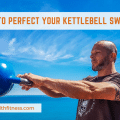Don’t settle for decline as you age.
Age is no barrier for improvement. If you’re going to play the game, you may as well play it well.
The thing that really adds years to you is how you change your habits. Good training and good habits turn the clock back, while being sedentary accelerates the aging process.
Don’t let expectations of “aging gracefully” leave you weak. What matters is what you do: today’s article is going to teach you how to age well, avoid injury, and play better.
The best exercise program for senior golfers is one that respects the extra wear and tear on the body, but also reverses it. It’s a mixture of pure performance and better longevity in sport. A good training program means you’re playing better for longer.
Improve your body, improve your game
Golfing isn’t the most physical sport – being stronger isn’t the whole game. However, it does rely on a healthy body, good movement, and powerful drives – so these are the focus of a good training plan.
Golf strength shows up in the combination of the backswing and the follow-through. These two positions are the extremes of the sport and they provide the outline for what needs to be better: full range strength and control in the hips, spine, and shoulders.
Better muscle mass and strength mean better health, supporting joints and letting you put more force through the ball on your swings. It also builds co-ordination and puts you back in touch with your body.
The benefits of these changes should be obvious – both for your golf game and your everyday life: look, feel, and play better for longer, with less pain.
Step 1: Freeing up movement
The first place to start is freeing up the movement of your body. This is going to be the starting point for every other improvement.
Mobility erodes over time if you’re not using it. Moving through a range of motion is how you maintain it and keep your joints/muscles healthy.
Whatever you’re trying to get better at – mobility, strength, co-ordination for your swing – movement is where it all starts. We need to beat back inactivity and any negative effects it might have had on your body.
This means working through full-ranges at whatever loading makes sense. That could be assisted, bodyweight, or weighted. Your body works on a simple process: move it or lose it.
Yoga for senior golfers
Yoga is one of the best places to start for any golfer – but especially a senior golfer.
It can be perfect for dealing with aches or pains, niggling injuries, or feelings of ‘tightness’ it can be a great way to get the body moving.
The pre-conceptions around yoga have been the only reason people avoid it. It’s a low-intensity form of exercise you’ll see every elite athlete practicing whether they’re a golfer, sprinter, or weightlifter. It’s healing, restorative exercise for everyone.
We also love yoga for senior golfers because it achieves mobility through deliberate movement, using exercises that focus on coordination and stability. These are great for building better joint stability, reducing injury risk, and building control on top of flexibility.
The result is a structured movement system that covers a range of common goals all at once. It’s also relaxing and combats stress. It’s a win-win.
Pilates for senior golfers
Pilates are a level up on yoga for most people, combining the benefits of stretching and loading. This builds control: not just being able to move in longer ranges, but being strong through them.
The training of your end-ranges, the most flexed and most extended positions of a muscle/joint, is key. This helps you reduce injury risk drastically, as well as strengthening the muscles to help with performance.
It’s another great stepping stone on the journey to getting or keeping your body healthy, as well as building towards strength training for golf. This matters particularly in the shoulders, spine, and hips – areas Pilates are particularly good at freeing up and getting strong!
Again, Pilates for senior golfers offers multiple benefits at once. It builds co-ordination along with mobility and strength, making it a perfect partner to your golf game.
Step 2: Basic elements of Better Golfing Performance
Yoga and Pilates have a reputation for staying active and maintaining your body. Strength and power training are more about building performance.
This is usually split up between weight training and bodyweight training. As long as you’re challenging yourself, they’re both effective.
Power training involves explosive movements, so it’s best for when you’re familiar with strength training and injury-free.
Addressing dysfunction is usually step one – since strength training isn’t just bulging muscles and big lifting. Often, it’s making sure your body has a balance of strengths to support the joints and practice good movement.
For example, strong hips muscles like the buttocks help you keep your knees healthy. This is good for better longevity and performance in golf, but also key to advancing within strength training itself.
Key areas for combatting dysfunction are:
- Mobility: improving your range of motion and control helps keep joints healthy
- Co-ordination: training improves control over movement and body-awareness
- Balancing positions: exercise can help balance out the extreme positions of your backswing and follow-through
- Improving posture: exercise improves your resting positions and keeps your body healthy
- Core strength: building a strong core improves your swing with extra power as well as keeping your hips and spine safe
These offer a simple starting point for beginners to strength training that offer the same benefits you’d expect from yoga or Pilates. It’s more deliberate movement, but this time with a load you can scale up until you switch from reducing switch from reducing dysfunction into building performance.
Building Strength for Golf: What Do You Need?
Strength is a measure of how much force you can apply. Strength is also key to keeping your joints and bones healthy – they get stronger when you train them, too!
There’s no movement without muscles, and training them makes all movement better. Specifically, it means less injury, more control in your swings, and more length on your drives.
Shoulders: Golf moves the shoulders from all the way back (in the wind-up) to all the way forward (the follow-through). Strong shoulders are less sore and produce a smoother, longer drive.
Core: The core keeps the spine healthy when you swing and transfers force from the hips and legs to the ball. A strong core also contributes to the swing itself, adding more force along the way.
Hips: The hips are the powerhouse of the drive – they need to be mobile and strong. Weak or limited hips can cause jerky, choppy swings with less range. Free up your movement and build strong hips for better golfing performance.
Step 3: Building Specific Strength for Golf
Once you have a basis of general strength, which should already be feeling like a great asset, you can train a very specific kind of golf-strength. This usually involves moving into rotation and extension in your core, building hip-knee extension into your workouts, and practicing movement as specific to your swing as possible.
These also apply to the same regions we mentioned above – the shoulders, core, and hips. The specific strength begins to train them in the patterns they move through in golf.
Specific strength is the final step, once you’ve built up comfortable movement in these joints and the general strength foundation to perform them well. This is the same kind of work you’d see in elite golfers, as well as amateurs.
When you get to this point, you’re ready to progress patiently and work on your weaknesses.
Exercise program for senior golfers
This isn’t a standard exercise program. We’re not just going to outline a few workouts and say, “go do it”.
Among senior golfers, the variety of skills and experiences is even wider than younger counterparts. The key is to figure out where you should be starting – and we’ve put in a few stages where you might start, each leading into the next.
These stages each have their own 3-week block of training you should move through. If you’re unsure where to start, just go to the very start: you’ll never regret doing good patient prep work.
Basic outline
Each exercise program for senior golfers has 2 sessions, which you can either use one of each per week (such as Monday / Thursday). You can also alternate them on Monday, Wednesday, and Friday so that you alternate between sessions 1 and 2 each time.
RPE: How Much Weight Should I Use?
The best exercise program for senior golfers is one that allows beginners to start and experienced trainees to progress. That’s why we use RPE to figure out the right weights for a workout.
This involves taking a rating out of 10 based on effort, including the amount of reps you think you still have in the tank: you select weight that produces a certain difficulty for the exact reps and sets.
This allows you to start with this program at any level of strength. Sometimes this won’t be possible, when you use bodyweight exercises, since there’s no weight you can adjust, which we marked as “-“ in the program.
Here’s a quick outline on roughly how RPE (rate of perceived exertion) works:
Equipment: What Do you Need? What Can you Buy for Home?
These are generally gym workouts since they tend to involve a combination of weight training and bodyweight exercises.
There are a few pieces of equipment that you will find in some of the workouts – and you can pick these up for yourself:
Stage 1: Preparation work for total novices / rehab necessary
During these early weeks, consider that you’re going to need to work from what you can do. It’s a complete beginner’s training program so the focus is on using what you can to progress.
This means you may need to use assisted versions of these exercises or they may need additional challenge. Work to what challenges you while being able to complete according to the plan.
S stands for sets, and R stands for repetitions. For example, 3×8 is 3 sets of 8 repetitions. You rest between sets, usually for around 60-90 seconds – or until you feel ready to go again!
Day 1
Reverse Lunge: a great place to start building leg and hip strength. It’s simple to learn and builds a great foundation for future exercise. This kind of single-leg work is key for good golf strength.
Shoulder dislocates: These are a simple movement to start opening up your chest and shoulder joint. It gives you better movement in your wind-up and follow-through, for a smoother swing.
Band pull-apart: This strengthens the upper back muscles and builds better posture. It complements the shoulder dislocates, building control in the shoulders for better force and injury-resilience.
Dead-bug: the dead-bug builds core strength – specifically rotational core strength. This keeps your spine healthy during swings, and helps it rotate more powerfully and smoothly during your swing.
Lying knee tuck: this is a simple abdominal exercise for a healthier spine and stronger core. It’s a good way of building simple trunk strength, preparing you for future exercise.
Day 2
Assisted Cossack squat: the Cossack squat is great for building hip symmetry and strength. It also strengthens the legs and hips for a better swing. This version is a little easier for beginners.
Hinge movement progression: extending the hips is key for a good swing and this movement helps you start to feel the right movement. Practice makes perfect, and this also helps keep your spine healthy.
Face Pulls: a great exercise to strengthen the rear delt muscles, keeping your shoulders healthy and moving through their full range. This is key for better shoulder movement in your swings.
YTWs: just like the face pull, this builds the upper back muscles, with more focus on posture. They keep shoulders healthy and strong, opening up the chest and improving posture, as well as smoothing out your swing.
Incline push-up: the beginners chest and tricep work, strengthening the shoulder girdle. It also helps you fend off golfer’s elbow, as well as other common problems like shoulder impingement.
Wall slide: this helps you practice protraction of your shoulder blades. Most people ignore this movement and expose themselves to shoulder injury risk. This shores up your shoulder health.
Glute bridge: a perfect beginner exercise for golf performance. It strengthens hip extension, building more strength for your drive and opening up the hips for better mobility and control.
Hollow hold: another great core exercise, this builds postural strength and keeps your spine healthy.
Stage 2: GPP for healthy novices
This is a general physical preparation phase where you’re developing general work capacity. It’s about using simple movements to get your body ready for more-specific golf training.
We use weight for the purpose of building better tendon and joint health, as well as the obvious strength and power benefits.
Day 1
Walking lunge: this develops single-leg and hip strength. It stabilises the knees and builds the knee-hip extension that is key for a good drive.
Dumbbell row: a great upper back developer, strengthening the lats and rhomboids, which are key for better shoulder positioning and a smoother swing. It also protects the elbow and shoulder from injury.
Supinated pull-apart: The elastic resistance is great for building active control in the upper back and mobilising the shoulders. The underhand position adds additional challenge and progression.
Kettlebell Romanian Deadlift: this is a great hip-extension exercise for beginners, building basic strength and preparing for exercises like the kettlebell in future.
Lying single-leg raise: a more-challenging version of the knee tuck, this helps build the ab strength and rotational control you’ll need to maximize the safety and length of your drives.
Day 2
Cossack squat: taking away the assistance, this exercise becomes more challenging. This builds more leg and hip strength, stabilizes the knee, and trains the core. A great all-rounder for better golf.
Reverse flye: this builds great strength in the same way as the pull-apart: shoulder retraction is crucial to freedom and control in your swing. Stronger upper backs mean better golf.
Face pull: (see above)
Seated press: this is a tricep and shoulder exercise, but with additional core and upper back challenges. This makes it a great way to build strength in multiple muscle groups and save time.
Tricep extension: this is perfect for keeping your elbow and shoulder healthy – common sites for injury among golfers.
Single-leg glute bridge: this single-leg movement makes for a more challenging hip-extension exercise. It combines the benefits of a more powerful drive with asymmetrical core and hip training.
Side plank: core strength requires strong obliques. The side plank is great for building up the obliques, protecting the spine and contributing to the asymmetrical strength golf requires.
Stage 3: Base block for healthy, mildly experienced golfers and trainees
This is a general strength training block that you’d expect to see for any beginner. Aside from the preparatory work associated with the past 2 stages, this builds strength and performance.
It works by slowly increasing the overall work you do week-on-week, leaving you with a stronger and healthier body by the 3rd week of the block.
It also helps to build the two-limb strength and stability and focuses on beginning rotational and hip extension that you’ll need for more specific training in future.
Day 1
Deficit dumbbell lunge: adding weight to the movement allows you to build more leg and hip strength, as well as core stability. This is the all-purpose strength exercise for day 1.
Dumbbell row (see above)
Supinated pull-apart (see above)
Barbell Romanian Deadlift: an amazing exercise for the back, hips, and hamstrings. It builds hip extension and can use as much or as little weight as you’re comfortable with.
Hanging knee raise to L-sit: a simple movement that builds great core strength – combining static holds (L-sit) and the knee raise to really challenge and develop your trunk muscles.
Day 2
Goblet Cossack squat: loading the Cossack squat continues to develop leg and hip strength, as well as building crucial stabilizer muscles in the hips and core. Perfect for better, healthier drives.
Kettlebell swing: combining weight and dynamic movement, the kettlebell swing is the first real power exercise, and one of the best for golfers. It has everything you need: core strength, hip extension, and powerful movement!
Supinated pull-apart (see above)
Seated dumbbell press: like the seated press but with dumbbells. This builds the shoulder stabilizers more effectively, which is perfect for wind-up and follow-through positions in your drive.
Dumbbell row (see above)
8-point plank: a more challenging version of the plank, this builds core strength and control in a scalable way. It’s like a reverse hollow hold and builds fantastic core strength for spinal health and transferring force from the hips to the ball.
Side plank with twist: like a side plank, this builds oblique strength. The added twist develops your rotational strength, which means less risk of injury during swings – and a more powerful movement for longer drives.
Stage 4: Intermediate general strength for experienced trainees
This is intermediate training that builds on the work you’ve done already, progressing directly from the last block. It makes the movements more challenging to ensure that you’re developing both movement quality and skill.
This is the bridge between the general movement quality training and specific rotational/power training of high performance golf strength training.
It continues to build more difficult single-leg exercises to build stability, while adding more dynamic strengthening exercise and more rotation training.
Day 1
Dumbbell Bulgarian split squat: a perfect leg exercise for golfers, combining leg and hip strength, asymmetrical training, and core stability. It opens up the hips and makes them strong, building the range and power of your drive movement. The result is longer, safer drives.
Dumbbell row (see above)
Supinated pull-apart (see above)
Stiff-legged deadlift: like a Romanian deadlift, but starting from the floor. The longer range challenges the hips and back slightly more, and this movement is great for the hip extension strength behind a great drive.
Hanging leg raise: this is a more challenging version of the hanging knee tuck and builds great ab strength, keeping your spine healthy and helping better force transfer from the hips.
Day 2
Goblet Cossack squat (see above)
Kettlebell swing (see above)
Seated OHP (see above)
Single-arm dumbbell bench press: a fantastic shoulder exercise for health and strength. It builds stabilizer muscles and forces you to control the asymmetrical loading. This is perfect for the asymmetrical shoulder positions you’re going to see in the wind-up and follow-through of a drive.
Seated dumbbell press (see above)
Tricep extension (see above)
8-point plank (see above)
Side plank with twists (see above)
Stage 5: specific strength block outline
This is the final 3-week block of the program and it shows in the increased difficulty and complexity of exercises. These are the exercises that you’ll find in the training programs of many serious golfers of all ages.
The weights need to be selected along your own abilities, progressing patiently over time, as your body adapts to the movements.
Day 1
Deficit dumbbell Bulgarian split squat
Dumbbell row (see above)
Supinated pull-apart (see above)
Reverse flye (see above)
Stiff-legged deadlift (see above)
Woodchopper: this directly targets the hip-core-shoulder rotating movement you’re going to perform in golf. It builds the relevant muscles and gets you familiar with the whole-body movement.
Day 2
Goblet Cossack squat (see above)
Kettlebell swing (see above)
Seated dumbbell press (see above)
Rotating lunge: a perfect exercise for building leg, hip, and core strength together. It helps build full-body rotational control and strengthens the connected muscle groups required for a great drive.
Explosive step-up: a great drive is both smooth and explosive. The explosive step up helps work on the power in the leg and hip, building the ability to produce force rapidly and build a great drive.
Slam ball: a great explosive core movement that helps build dynamic, reactive ab strength. In simple terms, it’s really specific to reducing the injury risks associated with golf and high-speed extension and twisting. This makes it a great addition to your training to get used to moving fast and safely.
The Take-Home Message
Good training for a senior golfer is about staying in the game and improving.
Age isn’t an excuse nor is it something to be afraid of. Good mobility and strength training help you keep getting better and make the most of your body. You can improve your physique, build a better drive, and keep your body healthier through whatever life throws at you.
The perk of age is figuring out what works and how to approach problems. The same is true when it comes to training for golf: what works is good movement, patient progress, and doing things right.
If you apply these processes to this exercise program for senior golfers, you’re going to come out of it a healthier, stronger person – and a better golfer! Get started, where you are with what you have, and just wait and see how far this approach takes you.
Related read: Best Golf Rangefinders For Seniors
